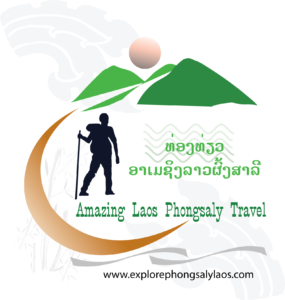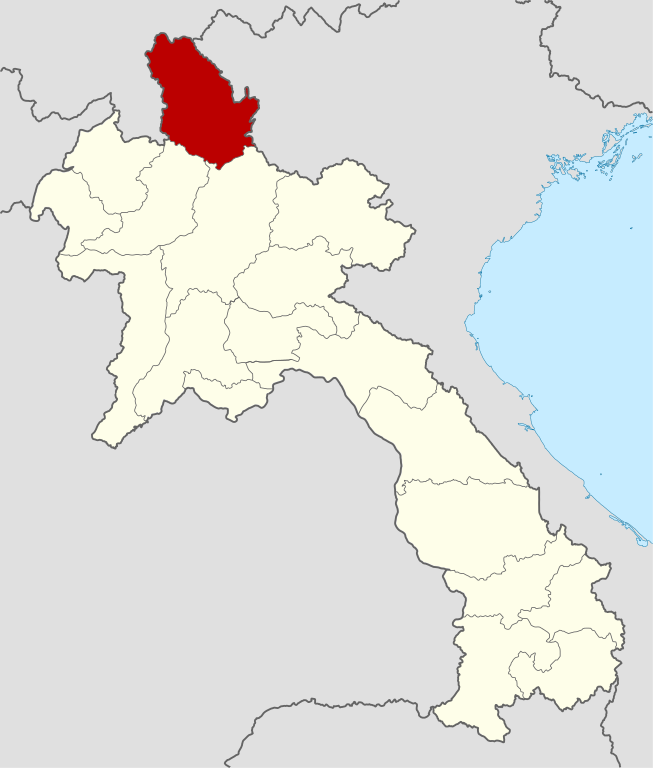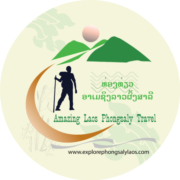Phongsaly located farthest north of Laos, shares borders with China and Vietnam. Most of Phongsaly is at high altitudes, and the capital is located 1,400 m above sea level. The forests of Phongsaly are the most remote and well-preserved in northern Laos, and the scenery includes spectacular limestone mountains and the Nam Ou River (the biggest tributary of the Mekong ). The population is made up of about 22 different ethnicities, which are Phounoi, Tai Lu, Khmu, Akha, Haw, Yao, Oma, Poulee, Mouchee, Laoloum, Pala, Lolopho, Hmong, Cherpia, Laoseng, Laobith, Hayi, Tai Neua, and Erpa.
Phongsaly Town was not destroyed in the American war. It features a remaining old quarter with Yunnanese wooden architecture, now rare to find in Yunnan itself. Most of the people living here belong to the Hor ethnic group, speak in Chinese. In the “Museum of Ethnic Groups in Phongsaly Province” you can admire the various local textiles, artifacts and handicrafts. The town itself is surrounded by rolling hills and is built into the side of Phou Fa Mountain (1,625 meters). The 45 minutess hike up to its stupa on top offers spectacular views of the town from above and the mountains in the far distance.
MOST NORTHERN LAOS
Click to add your own text here
ETHNIC DIVERSITY
Click to add your own text here
TREKKING
Click to add your own text here
400 YEARS OLD TEA PLANTATION
Click to add your own text here
400 YEARS OLD TEA PLANTATION
The famous 400-year-old tea plantation is located about 18 kilometers from Phongsaly Town in the Phunoy ethnic village of Ban Komaen, which according to some tea experts has some of the oldest tea trees in the world. The large root system of the old trees extends deep into the mineral-rich soil and gives ‘Phongsaly Tea’ its specific aroma and taste. The oldest trees stand 6 meters high with a stem up to 30 cm in diameter. The Tea Pavilion’s exhibition provides a peek into the world of tea, from its legendary beginnings to its production and consumption, and explains how the famous 400-year-old tea is picked and processed by the villagers into “tea cigars”. From there, you can take an hour stroll through the ancient plantation: just follow the Tea Trail signs! The trail will lead you to the top of the tea mountain to enjoy the stunning view of Phongsaly and then to the village temple and its unique bigeared Buddha statue. Ban Komaen makes an ideal 1-day excursion, therelatively flat road passing through more recent tea plantations and offering a superb view of Phongsaly and surrounding mountains.
Town map and mountain bikes to rent (50,000 Kip/day) are available at the Tourism Office
ETHNIC MUSEUM
The Museum of Phongsaly Ethnic Groups’ newly designed exhibition has been inaugurated in January 2013. It presents the province and its people, their origin and way of life. It also includes information and exhibits about different aspects of their daily life: clothes, music, agriculture, housing, social organization, their rituals and ceremonies, as well as about Buddhism. Don’t miss it, it is one of the best museums in Laos and you will not find this information anywhere else! You will need at least 1 hour to visit the exhibition. The museum is located in the centre of Phongsaly town, next to the Agriculture Promotion Bank and Lao Telecom, close to the post office. It opens Monday to Friday from 8:00 to 11:30 and 13:30 to 16:30. Entry fee is charged. For more information please contact Mr. Khoun: 020 56576050








 Users Today : 56
Users Today : 56 Users Yesterday : 88
Users Yesterday : 88 This Month : 551
This Month : 551 This Year : 15140
This Year : 15140 Total Users : 26796
Total Users : 26796 Total views : 159322
Total views : 159322